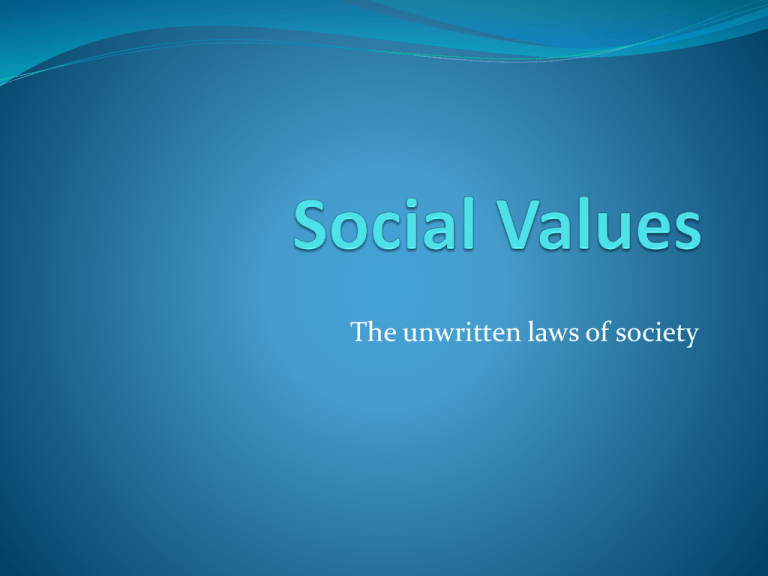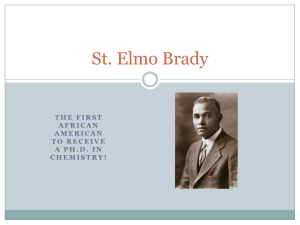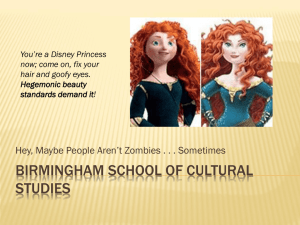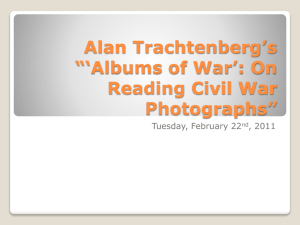
The unwritten laws of society
What are Social Values?
Social values are the unwritten laws by which a culture
lives.
They are so transparent that they may exist without us
even realising their impact.
Whilst it can be easy to recognise the values of history
and other cultures, the social values of our own culture
seem natural, self evident, its just the way things are.
Absolute and Relative values
Depending on their nature social values can be relative
or absolute.
ABSOLUTE VALUES are those that are fundamental,
unchanging and true for all members of society across
time. Such values may include truthfulness, respect
for others and the sanctity of human life.
RELATIVE VALUES are subject to change as society
and the individuals within develop. Examples of those
include those relating to gender, race and sex.
Attitudes towards race have clearly come a long way in
the past 30 years.
Example of change
The following is a clip from a 70’s British TV sitcom
called “Love thy neighbour”. It was very popular
both in Britain and Australia yet the behaviour and
language would never be acceptable now.
Are Social Values universal?
Social values may remain constant across generations
and cultures or they may vary depending on whether
the value is absolute or relative.
Social Values are relevant to time, place and culture.
For example the social values relevant to mainstream
western culture in Australia in our current time may
not be consistent with social values relevant to popular
Muslim culture in Indonesia at the current time.
Not all values equal
Not all values are seen as equally important
Individuals and communities constantly create and
evaluate their values system so the importance of a
value can change.
If we expressed the importance of certain values along
a line from “must” to “never” we could see their place
move up and down the line as society evolves and the
inherent value system changes.
Types of Social Values
We can have dominant or traditional social values. We
can also have emerging, alternative and oppositional
social values.
Agreeing with values and acting on them may not
always be the same. Social values are based on a
combination of belief, behaviour and aspiration.
Sometimes we believe in a value but do not act on it.
Eg – Whilst we may agree on the value of a healthy diet
we still eat junk food.
Types of Social Values
DOMINANT: Dominant social values are those that
the majority of people in a society support at a
particular time.
Examples of dominant social values in Australia at the
moment could be values such as:
Men and women are considered equal, or
Australia is a multicultural society and treats all
cultures as equal.
Types of Social Values
TRADITIONAL: Traditional social values are those
that a majority of people have believed over a long
period of time. They may be dominant values or they
may have declined in importance over time.
Values such as Women should be home makers or Men
should be the breadwinners in a household are both
traditional values that were held for a long time
however they have declined in importance in
Australian society at the current time.
Type of Social Values
EMERGING: Emerging social values are those that
develop as a result of the failure or inadequacy of
traditional or dominant social values because of the
emergence of new ideas. They may, in time, replace
the earlier values or may add a degree of sophistication
or complexity to our understanding of them.
Acceptance of same sex couples could be considered an
emerging social value at this time in Australian society.
Types of Social Values
ALTERNATIVE: Alternative social values are those
which are held in contrast to dominant or traditional
values. Alternative social values may in time develop
greater support and emerge as new dominant values or
they may remain as an alternative, held by a smaller
more insignificant sector of society. Traditional values
may, over time, diminish in support sufficiently to be
considered alternative.
The once traditional value of Men being the family
breadwinner has diminished to an alternative value.
Types of Social Values
OPPOSITIONAL: Oppositional social values are those
values held by a small group in society which are in
opposition to those held by the majority of society.
Values held by cultist sects or religious extremists
could be considered oppositional social values. They
are only held by very small sections of society and
often in opposition to those held by the majority.
Representation of Social Values
Media products are crafted to suit an audience, they must
reflect the basic beliefs and values of the target audience or
that market will not buy the product.
Television presenters often say:
Thankyou for watching, see you tomorrow, take care and good night
We know he is not speaking directly to us. He won’t see us
tomorrow and is unlikely to have thought about us taking
care or having a good night. He is simply representing the
social value of good manners when farewelling someone in
our society. If he was to say something like “May Allah watch
over you” he would not be representing dominant social
values in our society.
How are values represented?
Social values are embedded in every part of a media
text. In audiovisual texts they form part of every story
and production element.
A character, a look, a colour, a plot development, a
sound, a relationship, every object, location, situation.
Everything within a text potentially represents a social
value.
Supporting & Challenging values
Most mainstream media texts support the dominant or
traditional values of their production period. The makers
of these texts want the biggest audience they can so
products are designed to appeal to a wide market. It varies
according to target audience.
Look at American teen movies for example. The
representation of characters and plots reflects social
values, and typically involves portrayal of tradition gender
roles and the importance of beauty and hedonism.
Interestingly , although being about ‘having fun’ the sub
plot usually has conservative messages about sexuality and
promiscuity. The most desirable characters are usually not
the promiscuous ones.
Supporting & Challenging values
Media texts also challenge social values
Government advertising for example is often designed
to challenge social values. In recent years such
advertising has been used to change attitudes and
behaviours in a broad array of areas.
Traditional and dominant social values surrounding
areas such as road safety, sexual abuse, smoking,
alcohol use, terrorism, and disability awareness have
been challenged in order to promote change.
Early 1970s USA
So what do you know about the 1970s in the USA?
What were the dominant social vales of the time?
What types of significant events were happening
during this time? Remember we don’t want broad
generalisations, we need to be specific.
What was happening politically?
Was this a time of social change?
I don’t want to hear your speculation, I want evidence.
Get online and find out now.
Early 1970s USA
Shift away from the social activism of the 1960s towards
activities for individual pleasure such as recreational
drug use, rise of the disco, swinging, etc
Women’s movement started to gain some support and
changed conditions for women by the end of this
decade.
African Americans started to make their presence felt as
the number elected into congress grew
Early 1970s USA
Vietnam war continued to divide the country. Student
protests lead to the shooting of 4 students at Kent
State. Secret government papers about the US
involvement in the Vietnam war are leaked to the press
discrediting President Nixon.
Distrust in the government continues to grow
Environmental movement launched in 1970 with the
first Earth Day. Several federal policies are introduced
regarding clean water, air, endangered species, etc.
Early 1970s USA
Developments in the sexual revolution continues
throughout this decade.
Contraceptive pill (which was developed in the 60s)
began to have more wide spread acceptance and use.
Sharp rise in divorce rates and a significant rise in the
percentage of single parent families.
Rise in the amount of middle class families in the USA.
The Brady Bunch
The text we will be using for Social Values this year is
The Brady Bunch.
The Brady Bunch is an American sitcom produced and
set in the early 1970s.
It centres around a white, middle class family in the
USA. I have chosen this text for a number of reasons
but the most important is that the social values are
easy to identify and analyse as they are often very
different to our own.
The Brady Bunch
The 1970s was a decade of change, however The Brady
Bunch harkened back to traditional family values of
the 50s and 60s.
Repeatedly and firmly upheld the family as a tight unit
of support, love and understanding in a time where
divorce rates and single parent families was high.
Brady Bunch steered clear of political and social issues
of the day.
Rarely did we see any non white characters
The Brady Bunch
The women’s liberation movement gained a great deal
of momentum in this decade but issues of gender
equality are boiled down to brother and sister fighting.
The counter culture of the 60s/70s was only
represented in minor characters and seen as abnormal.
In a family of 8 people the male is still the only one
that works.
Women perform the traditional female tasks such as
cooking, cleaning and household duties.
Expressing a Social Value
Part of the skill in discussing social values is knowing
how to express them properly.
A social value needs to contain a concept, must express
a value towards that concept and should indicate a
time and place.
WRONG – The social value of gender equality.
RIGHT – Equality between genders is beginning to
gain positive support in the early 1970s in the USA.
This is represented in......
Representations
Social values are represented in the text by a number
of elements. It is important to be able to discuss how
the text portrays these values through the
representations.
How does character behaviour support or challenge
values? What does the interaction between characters
or attitudes towards each other indicate?
What does the character’s appearance and dress tell
you about what the product supports? Is clean cut and
conservative represented as the norm, or something
out of the ordinary?
SAC type questions
Describe two social values that existed in the period and
place of production of The Brady Bunch(season 2)
During the early 1970s in America equal rights for women was beginning
to be accepted as a dominant value among society. The movement which
started in the 60’s carried over to the 70’s. Aims at social equality and
repeal of the remaining oppressive, sexist laws, were successful.
Striving to be part of the middle class was seen as desirable and an
indicator of success during the 1970s in America. Larger homes with
excessive appliances marked the copious consumerism evident in the
middle class.
Education is continued to be valued by Americas during the 1970s. The
introduction of desegregation programs and access to education for
women and minority groups reinforced this value.
SAC type Questions
Explain how one of the social values you identified is reflected
in one or more of the representations in the Brady Bunch.
Importance of education is clearly supported by a number of
representations in “The dropout” episode.
Mike and Carol become concerned that Greg has become obsessed with
baseball and is neglecting his studies which is reflected in the
conversation they have at the table. The use of close ups in the SRS
sequence reinforce the importance of this value. The flippant, light music
typical of the program is not present in this scene.
The fact that the Greg’s teacher rings home after a week to report a slip in
his grades is indicative of the value placed on education.
The representation of the successful sports player, that sparked Greg’s
obsession, revealing his career was finished at 34 but he was secure as he
had a college education further supports the value.
Greg is reluctant to listen to the advice and continues with his self
absorbed obsession which eventually leads to a crash, perhaps indicating
that the path he chose was not highly valued.
SAC type questions
Explain how one of the social values of the production period
have influenced the content in The Brady Bunch.
The traditional social value of the importance of conservatism in American
society has influenced the content of the “Our Son, the man” episode.
Greg try’s to fit in with the counter culture of the time. He buys some
“groovy” clothes, begins speaking and acting different and decorates his
own room. All of these changes are suggested as abnormal.
Carol describes the change to his room as going from “Modern Danish to
American disaster.” This reflects the conservative nature of American
society and how challenging the counter culture was.
Greg’s siblings, who he normally leads, laugh at his clothes and ridicule the
way he speaks. He looks out of place in the conservative, clean cut family.
His attempts to get a date, and hang out with the guys are rejected.
At the close of the episode he eventually decides to return to the
conservative safety of the family where he belongs and go on their
predictable, annual camping holiday to Mount Claymore.
SAC type questions
Discuss the extent to which one or more of the representations in
the text either supports and/or challenges dominant, emerging,
alternative or oppositional social values held during the time of
production.
EMERGING VALUE OF FEMALES HAVING EQUAL RIGHTS
The roles of the women in the Brady Bunch conform to traditional roles and
values of the 1950s. They are generally seen as home makers and involved in
traditionally female roles. This challenges the emerging social value of women
being seen as equal to men in American society during the 1970’s.
In the “Babysitters” episode Alice is making curtains for her boyfriends
apartment. She says that she intends to turn “that man’s apartment into this
woman’s apartment”. This suggests that she cannot be independent without a
man which challenges the whole value of women’s independence.
We also see this emerging value being supported in the babysitters episode.
When one of the siblings asks who is in charge Carol says that Greg and
Marcia are equally in charge, yet later in the episode when some trouble arises
Greg take charge of the situation without any consultation.
SAC type question ‘cont
TRADTIONAL VALUE OF CHILDREN RESPECTING ELDERS
Although this is a traditional value which is losing ground in the 1970’s in
America it is still firmly upheld in The Brady Bunch.
In the “dropout” Don Drysdale has to tell the boys to address him by his
first name as a kind of a treat Even so the youngest cannot accept a
challenging value such as this still uses the respect term of Mr Drysdale.
In “Our Son, the man” Greg seems to challenge the norm by addressing his
parents by their first names. They make a point of saying that though they
acknowledge this is the “fad” at the moment they don’t accept it and
expect to be called “Mom & Dad”. This reinforces the notion that Brady
Bunch supports more traditional values on the adult/child relationship
rather than the emerging values.
At no point in any of the episodes we watched do any of the children
challenge what their parents tell them when given a direct instruction.










